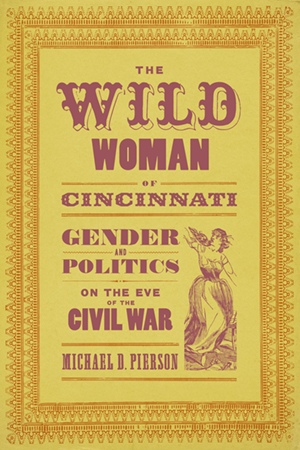
200 pages / 6.00 x 9.00 inches / 6 halftones
History / United States - 19th Century | History / United States - Civil War Period | Social Studies / Gender Studies
Popular entertainment in antebellum Cincinnati ran the gamut from high culture to shows barely above the level of the tawdry. Among the options for those seeking entertainment in the summer of 1856 was the display of a “Wild Woman,” purportedly a young woman captured while living a feral life beyond the frontier. The popular exhibit, which featured a silent, underdressed woman chained to a bed, was almost assuredly a hoax. Local activist women, however, used their influence to prompt a judge to investigate the display. The court employed eleven doctors, who forcibly subdued and examined the woman before advising that she be admitted to an insane asylum.
In his riveting analysis of this remarkable episode in antebellum American history, Michael D. Pierson describes how people in different political parties and sections of the country reacted to the exhibit. Specifically, he uses the lens of the Wild Woman display to explore the growing cultural divisions between the North and the South in 1856, especially the differing gender ideologies of the northern Republican Party and the more southern focused Democrats. In addition, Pierson shows how the treatment of the Wild Woman of Cincinnati prompted an increasing demand for women’s political and social empowerment at a time when the country allowed for the display of a captive female without evidence that she had granted consent.
Michael D. Pierson is professor of history at the University of Massachusetts, Lowell, and author of Lt. Spalding in Civil War Louisiana: A Union Officer’s Humor, Privilege, and Ambition.
“A fascinating and elegantly written study, The Wild Woman of Cincinnati restores the complex and compelling ‘Wild Woman’ to the historic record, providing her the dignity, respect, and agency she was all too often denied during her own lifetime. Pierson’s volume makes sophisticated arguments about what the Wild Woman’s story reveals about regional and political divisions, and conceptions of gender and power, in the antebellum United States. An engaging, valuable contribution to the scholarship, which will be of tremendous interest to both scholars and the general public alike.”—Holly M. Kent, author of Her Voice Will Be on the Side of Right: Gender and Power in Women’s Antebellum Antislavery Fiction
Found an Error? Tell us about it.